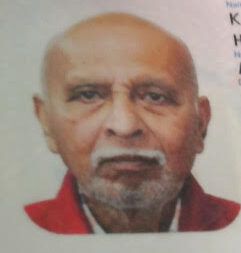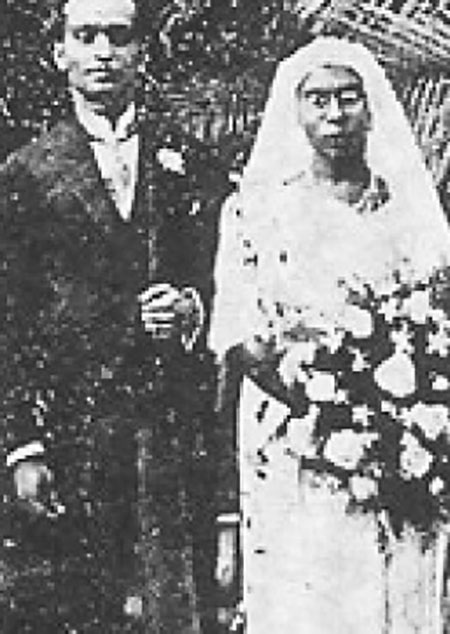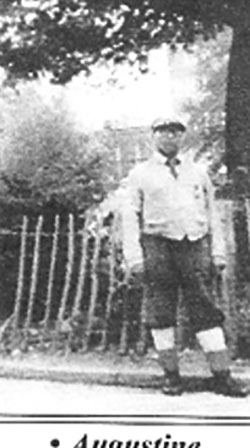The Lost Boy From Ceylon SWRD’s sister who vanished from Ceylon with her adopted son-by Hugh Karunanayake


Source:Island
Anna Florentina Dias Bandaranaike was the elder daughter of the wealthy Sir Solomon Dias Bandaranaike and was born at the turn of the 20th Century in June 1900, one and a half years after the birth of her elder brother S.W.R.D. Bandaranaike, later to be Prime Minister of Ceylon. Anna’s mother Daisy Ezlynne was the daughter of Sir Christoffel Obeyesekera, and was herself an heiress.
The Bandaranaike children were to inherit extensive wealth in the form of coconut estates and house property in Colombo. Both SWRD and his sister Anna were born in Elie House, Mutwal, a stately home of which Sir Solomon’s family were the last occupants, before it was acquired by the Government for building a reservoir on its grounds.
Anna was surrounded by wealth, and her early years were spent being cared for and pampered by two British maids. In October 1919, Anna, together with her maid Miss Church, accompanied her father Sir Solomon on a voyage to England. Sir Solomon always travelled with his valet Sardiel who was a member of the visiting group.
On June 24,1920, Sir Solomon presented his daughter Anna at a Court held by King George and Queen Mary at Buckingham Palace, an event described by Sir Solomon as “a very brilliant function, the likes of which is not to be found anywhere else in the world”.
Two year later in June 1922, Anna married Abraham de Livera at a wedding solemnised at All Saints Church, Hulftsdorf, followed by a largely attended reception at Udugaha Walauwaa, Silvermith Street, which was the town residence of Sir Solomon.
Despite the opulent lifestyle of her family, Anna’s life as a young woman seemed troubled. Her marriage to Abraham produced a son Christoffel and a daughter May, but the marriage was unhappy and she had increasingly turned to the comfort of prayer. It was into this unstable situation that a boy by the name Augustine was adopted by her.
She was over 40 years of age and fond of the little boy but constantly feared that her relatives may take him away from her. She would have perceived the threats as real, so much so that when the boy was just 11 years of age she abandoned her family including her two young children and fled to Britain with her adopted son. For years the two would lead a strange transient life in Britain living on a small monthly allowance from Anna’s fortune which she collected regularly from a bank in London.

Six years after her departure from Ceylon her only brother SWRD was elected Prime Minister of Ceylon, and three years later to die by the hand of an assassin Neither of these events persuaded her to revisit the land of her birth. She had by then adopted the name Rita and swapped her married name of de Livera for her mother’s maiden name Obeyesekera, apparently in a bid to escape detection by members of her family in Ceylon who she feared would take the boy away.
Her daughter May would travel to England to wait outside the bank for hours in the desperate hope of seeing her mother. There were a few fleeting moments in the 1960s when mother and daughter met but Anna refused to reveal where she and Augustine were living. She had in fact bought a small caravan where mother and son had been living moving the caravan around to different locations until finally settling in a field at Cross-in-Hand near Heathfield where they lived for 12 years.
Augustine lived a claustrophobic life with his adopted mother who was worried about any contact with authorities and did not let him attend school, visit a doctor, or make a single friend. She had taught him to read a little and his only contact with the outside world apart from their monthly visits by train to London was listening to the BBC world service. It was possibly those train rides that sparked an interest in him for model trains of which he had a sparse assortment consisting of bits and pieces of a quality that a frugal life style would afford. Eight years before his mother died he was finding the situation unbearable and had told his mother ” I am only a child. If you die who will look after me?”
Augustine was 38 when he woke one morning in 1977 to find Anna dead in her bed. “I shook her but she did not wake up, I knew she was dead” Augustine told Charles Glass who had known him. Terrified, he went to a nearby petrol station to get help and suddenly found himself surrounded by police having to explain that he was not responsible for her death. That night a sympathetic social worker found him a bed in an old people’s home, his first night’s sleep in a bed for years.
Anna was buried at Willingdon Council Cemetery, her funeral attended by her adopted son and her natural son Christoffel who travelled from Sri Lanka. There would be no further contact between Anna’s family and Augustine who eventually moved into a caravan in the grounds of another old people’s home and from there he moved into a flat at Chatsworth Road, Brighton where he lived for many years.
Locals in the Seven Dials area may remember his engaging and friendly smile, his eccentric habit of wearing his socks outside his trousers and his entire collection of badges which he wore on his jacket all at the same time.Twelve years ago the final chapter of an extraordinary life was written when Pandukhabaya Augustine Lankatilleke Obeyesekera known as Augustine died aged 71 years in his flat in Brighton, 33 years after the death of his mother.
Anna ‘s natural son Solomon Christoffel Obeysekera de Livera died a year later in July 2011, the daughter May having pre deceased him.
(Acknowledgments to Katy Rice and Charles Glass for their valuable contributions which form the basis of this article.) The article was first published in The Ceylankan, the Journal of the Ceylon Society of Australia, August 2012.







